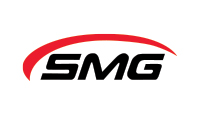September 10, 2014
EPA’s Proposed Methane Updates Estimated to Cost New Landfills $471,000 Annually
POSTED BY
William Shane, P.E.TAGGED
SHARE
According to EPA, methane is a “potent greenhouse gas” that accounts for nearly 9 percent of all greenhouse gas emissions in the United States. Since 1990, methane pollution in the United States has decreased by 11 percent, even as activities that can produce methane have increased. However, methane pollution is projected to increase to over 620 million tons of carbon dioxide pollution in 2030. Therefore, the Strategy to Reduce Methane Emissions was released in March 2014 as a key element of the President’s Climate Action Plan. The strategy commits to new steps to cut methane emissions. Key steps include “voluntary” actions and “common-sense” standards for the following industries:
- Landfills
- Coal Mines
- Agriculture
- Oil and Gas
According to the press release, landfills are the third-largest source of human-related methane in the country, accounting for 18 percent of methane emissions in 2012. Regulatory and voluntary programs, including the EPA’s Landfill Methane Outreach Program, have helped reduce emissions from landfills by 30 percent from 1990 to 2012. However, the administration believes that there is more room for improvement. As part of the Administration’s methane strategy, the EPA is proposing updates to its air standards for new municipal solid waste (MSW) landfills. Under the proposal, landfills would capture two-thirds of their methane and air toxics emissions by 2023 – 13 percent more than required under current rules. EPA estimates the net nationwide annual costs of complying with the additional requirements in the proposed rule would be $471,000 in 2023. Therefore, proposed landfill operations should be aware of potential new methane requirements and plan accordingly.
